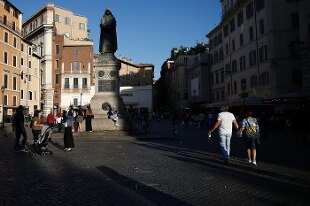- Co2 emissions decreased by 35% in 2 months, as well as target 10 years. Boom risk in 2021
- Earth Hour. One hour for the earth, one hour for Italy: at 8.30 pm the lights are turned off for the environment
- Aiea: CO2 emissions down, towards record -8%
Share
May 28, 2020 Between March and April, transport reduced to the essentials together with the shutdown of home heating cut pollutants, gas and fine dust. In particular, nitrogen dioxide (No2) collapsed, especially in Rome (59% for March and -71% for April compared to the average for the same period 2016-2019) while in Milan, the drop was less than 50% (29% in March and 43% in April).In 2019 the air quality in the cities had slightly improved compared to the previous year, however critical values remain which are not sufficient to guarantee compliance with the regulatory limits in force. In the meantime, cities are trying to gear up to be more and more sustainable, while the revitalization decree just fired by the government proves shy and insufficient to counteract the growth of congestion and traffic which will gradually return to invade our cities after the restart: now more than ever it is necessary to accelerate the right transition towards sustainable mobility.
These are the main topics of the third "MobilitAria 2020" report, the annual study of the Kyoto Club and Institute of Atmospheric Pollution of the National Research Council (CNR-IIA), which analyzes the data on mobility and air quality. in the 14 metropolitan cities in 2019 and in the first 4 months of 2020, in full emergency Covid-19.
"The analysis conducted on air quality for the year 2019 has shown the persistence for some Italian cities of high concentration values that are not sufficient to guarantee compliance with the regulatory limits in force", says the Director of the CNR -IIA, Francesco Petracchini, who specifies, "therefore a greater commitment by local administrations is needed to reduce concentrations and exceedances to the limit value. It was also analyzed in the period of the national lockdown following the epidemiological emergency from COVID-19 l effect on air quality. The two months of blockade made it possible to understand the important impact of vehicular traffic, in particular private traffic, as well as on the emissions of some pollutants also on the concentrations detected by the control units; this evidence is very marked , in accordance with what emerged from the analyzes of the same agencies for pollutants directly related to traffic, such as azo dioxide to and in a minor way but in the same way evident also for atmospheric particulate matter ".
From the point of view of urban mobility, the report analyzes what happened in this year and a half at an urban, regional and national level, with the various measures and investments. The PUMS, Urban Sustainable Mobility Plan, of the 14 cities in the municipal or metropolitan area were analyzed, with the current state of affairs and the main contents. PUMS that by October 2020, all metropolitan cities will have to approve. In 2020, with the coronavirus emergency, many municipal administrations have prepared, and are now starting to implement, Mobility Plans for Phase 2 of the restart, to encourage the growth of cycle and pedestrian movements in safety, to reorganize LPT services, enhance sharing mobility, staggering schedules, encouraging smart working and online services.
"The lockdown has reduced traffic, pollution and CO2 emissions, but we want to move again without polluting and congesting cities" says the coordinator of the Kyoto Club "Sustainable Mobility" working group, Anna Donati. "This is possible if we accelerate investments and measures to travel by bicycle, on foot, with sharing mobility and micro-mobility, if we innovate public transport services and focus on the electrification of vehicles. The relaunch DL is only a timid attempt to go in this direction, much more is needed and we ask that the DL be improved and the next measures be more effective ".
Even in times of Covid-19, structural changes and strong innovations are needed that accelerate decarbonization with an intelligent offer of mobility - according to the principles of Avoid, Shift, Improve. For Kyoto Club and CNR-IIA to achieve these objectives it is necessary to put in place several measures. These include: enhancing smart working and proximity services to decongest cities; plan entry times for work, schools, public and private services, commercial services to reduce peak hours and make better use of the spaces and services available; expand sharing mobility services, promote cycling mobility through the expansion of cycle paths and services for cyclists; support public transport; enhance the mobility manager figure; reorganize logistics in a sustainable way; focus on vehicle electrification and maintain limited traffic zones and low emission zones.

